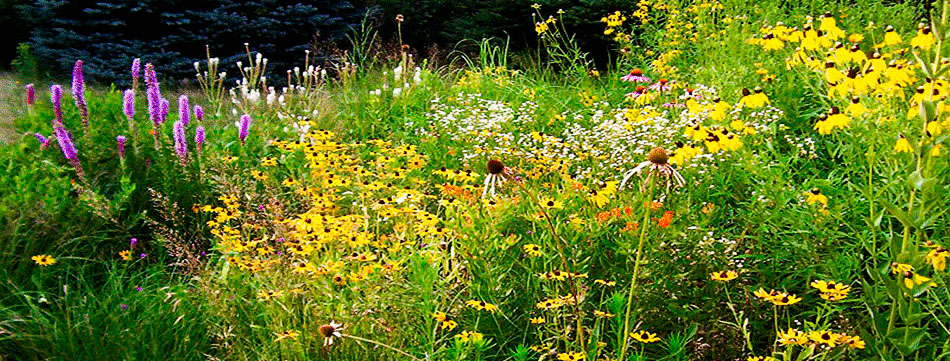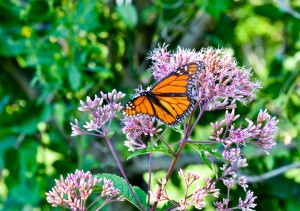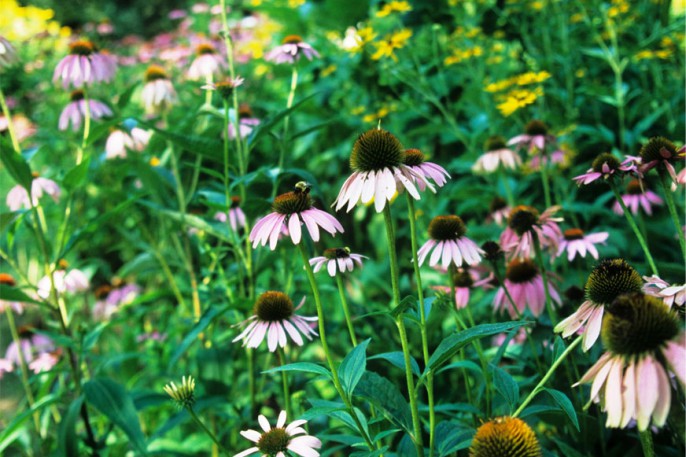Conservation Landscaping
Conservation Landscaping, also known in the Chesapeake Bay area as Bayscapes or Bayscaping, is the practice of modifying the visible features of an area of land in a way that incorporates environmentally sensitive design, low impact development, non-invasive native plants, and/or integrated pest management. The purpose is to create a diverse landscape that helps to protect clean air and water and support wildlife.
While both conservation landscaping and rain gardens incorporate similar elements of gardening to promote cleaner air and water, rain gardens are more focused on water drainage while conservation landscaping typically focuses more on visual and wildlife elements.
Functions of Conservation Landscaping
Conservation landscaping provides benefits in the form of clean air and water, supporting wildlife, and supporting a more beautiful and healthier human environment.
Clean Air & Water
- Using native plants that are adapted to the local conditions require less fertilizer and pesticides
- Trapping localized storm water on site to insure slow percolation and increased filtration of nutrients entering the ground water
- Reducing the amount of smog released into the air by reducing the amount of mowable lawn area
Wildlife
- Providing a diverse plant environment, attracting greater animal diversity
- Creating migratory corridors for birds and insects
- Providing local fauna with food and shelter
Human Environment
- Reducing the amount of pollution entering the environment
- Displaying the beauty of well-maintained, natural landscaping

Conservation landscape (Bayscape) showcasing native plants.
The Eight Essential Elements
The Chesapeake Conservation Landscaping Council has devised a list of Eight Essential Elements that represent the practice of conservation landscaping. By implementing these practices, your landscape will contribute to the restoration of the watershed by improving the region’s water and air quality.
To learn more about each element, including specific instructions on how to implement it, see the Eight Essential Elements of Conservation Landscaping (.pdf).

Conservation Landscapes offer food and habitat for many birds and beneficial insects.
A conservation landscape:
- Is designed to benefit the environment and function efficiently and aesthetically for human use and well-being;
- Uses locally native plants that are appropriate for site conditions (for help selecting/finding appropriate plants, visit the Native Plant Center);
- Incorporates a management plan for the removal of existing invasive plants and the prevention of future non-native plant invasions;
- Provides habitat for wildlife;
- Promotes healthy air quality and minimizes air pollution;
- Conserves and cleans water;
- Promotes healthy soils;
- and is managed to conserve energy, reduce waste, and eliminate or minimize the use of pesticides and fertilizers.




